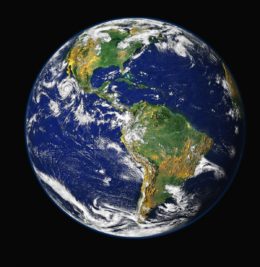
“I see trees of green, red roses, too, I see them bloom, for me and you. And I think to myself What a wonderful world.” What better way than Louis Armstrong’s famous tune to remind you that in a couple of days, on April 22, we will be celebrating the Earth Day – an annual event that brings global attention to the importance of protecting all our natural resources.
Chances are that, like most people, you care about certain issues more than about others. But we all have a vested interest – and a role to play – in preserving and improving our environment. There are countless ways in which everyone can contribute to a “greener” and more sustainable lifestyle – even those of us who live in a notoriously polluted city like New York. Although written in 2008, this article outlines how each individual can make a positive and meaningful difference on the environment. Having said that, we’d like to commemorate the Earth Day in a way that is befitting a music school – by bringing you Mother Nature’s own music. What does She sound like? The answer, my friend is blowin’ in the wind – literally!
When we think of music, we think of man-made melodies. Many of us are not attuned – so to speak – to the sounds of nature. For instance, the chirping of the birds – though raw and unscripted – is truly amazing. Then there is the sound of the wind rustling through the trees and waves crashing against the shore . Many people don’t take the time to listen to and enjoy this “natural” music, and that’s a pity. But here’s something you may not have known: natural phenomena like the wind, waves, and even rock formations, produce beautiful music of their own. Take the soothing sounds of a wind chime , for example – how cool is that? You might say that a wind chime is a “natural” musical instrument, in the sense that it needs no human intervention – just the forces of nature – to produce sound. But it’s not the only one. For example, over in Croatia, there’s an organ that is played by the sea – its pipes are under the water’s surface, so the waves and wind create random – but beautiful – harmonic sounds . Another organ, which, by the way, is the world’s largest musical instrument, is located deep under the ground in Luray Caverns in Virginia. Called the Great Stalacpipe Organ, it produces music when its rubber-tipped mallets tap the cave’s natural mineral deposits. And what about the aforementioned musical rock formations? This geological phenomenon occurs at Ring Rocks State Park in Pennsylvania. When struck by a hammer , these “magic” stones make some real …“rock music!” These are just a few examples of what Mother Earth is capable of. Isn’t She marvelous?
Like every holiday, Earth Day comes and goes, but we believe it’s important – crucial really –to take care of our natural resources each day of the year. How can you and your family celebrate Mother Nature with music? You could learn to play a woodwind instrument of your choice – the flute or recorder, for instance. But any music on any kind of instrument will be a fitting tribute because music is – in one form or another – everywhere in our environment. One of our teachers will be happy to come to your Manhattan, Brooklyn or Riverdale home and office and give you or your child fantastic lessons. After all, teaching music is …second nature to us!
